Matt Murdock and Adverse Childhood Expereinces
Matt Murdock, Daredevil #1 (2014)
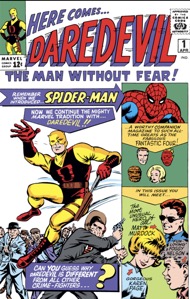
In Daredevil #1, 1969, Matt Murdock’s origin reveals he grew up without a mother and was told by his father to spend all of his free time studying. He was also bullied by his other kids in the neighborhood and given the nickname, Daredevil which he later embraced as a superhero. Later, he was stricken blind by a radioactive isotope while saving a stranger from being struck by a careening truck. Finally, his father was murdered for refusing to throw the prize-winning heavy weight boxing match.
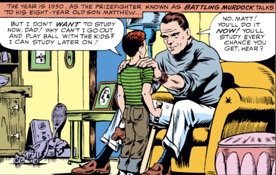
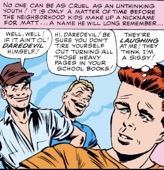
Understanding the link between Matt Murdock’s traumatic childhood, our own, and long-term effects of adverse childhood experiences helps to remind us as survivors that who we are now is not who we were at our beginnings. In the same way the Daredevil of today is different from the Matt Murdock of decades prior in appearance, attitude, and abilities we are also different from our childhood selves. Our origins as survivors, whether fictional or real, are all different, but similar and help to define who we are as individuals and the way in which we see the world. The individual prior to any traumatic event has been shaped and molded by lived experiences, knowledge gained, lessons learned, and relationships that have either been nurtured to grow or fallen to ruin, creating the person that holds this text and reads these words. Whether you consider yourself a hero or view yourself as a villain, your journey as a survivor has led you this moment reading the words on this page.
To move forward and heal, we first have to confront and understand the past and all it entails. This means calculating your ACE score. There are many different websites and questionnaires that can be used to calculate your ACE score. The charts below include areas for reflection regarding each adverse childhood experience, and an opportunity to include other ACEs that are not included in the list of 10 questions. Complete this chart to determine your ACE score:
STEP 1:
To help complete your ACE chart, below is a completed chart documenting the ACEs of Matt Murdock and the possible reflections he would include following the incidents in the graphic novel Daredevil: Battlin’ Jack Murdock (2008). If you can, read this comic short comic series using the Marvel Unlimited app. CLICK HERE TO VIEW MATT MURDOCK’S ACE SCORE.
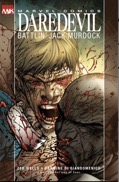
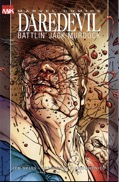
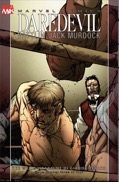

STEP 2:
Calculate your own ACE score. Answer the questions in the ACE calculator to the best of your ability by answering either yes or no in regards to events that took place on or prior to your 18th birthday. Afterward, add your “yes” answers to determine your ACE score. CLICK HERE TO MAKE A PERSONAL COPY OF THE ACE CHART TO CALCULATE YOUR ACE SCORE.
Superman, Hope, and Major Disaster
- Lois Lane / Action Comics #1084 “Force Majeure: Finale” (2025)
Superman, Hope, and Major Disaster
Hope is more than a word. It requires a balance of Willpower, Waypower, and goal setting. Before understanding these terms and how they all work together to create hope it is important to understand your hope score. To do that you will read three Superman comics that discuss Hope, what it means to have Hope, and whether or not an individual can lose Hope. You will also use this to make a copy of the HOPE SCALE TEMPLATE to find your own hope score.
STEP 1
Directions: Read Actions Comics #1082 “Force Majeure: Part One” (2025) either independently or with your therapist, counselor, and / or psychiatrist. If you do not have the physical comic, you can read the comic using the DC Infinite app. After reading the comic, examine MAJOR DISASTER'S HOPE SCALE #1 FOUND HERE and discuss the questions below with your therapist, counselor, and / or psychiatrist. Take note of the conversation in your personal journal.
1) What factors prevented Major Disaster from getting a higher Hope score?
STEP 2
Directions: Next, read Action Comics #1083 “Force Majeure: Part Two” (2025) and Action Comics #1084 “Force Majeure: Finale” (2025) either independently or with your therapist, counselor, and / or psychiatrist and calculate MAJOR DISASTER'S HOPE SCORE #2 FOUND HERE. Afterward, discuss the questions below with your therapist, counselor / psychiatrist. Take notes of the conversation in your personal journal.
2) Did Major Disaster’s hope score change? If so, what factors contributed to the changing of his Hope score.
3) What was Superman / Clark Kent’s role in determining Major Disaster’s Hope score?
4) What are the comics’ overall message about Hope?
STEP 3
Directions: Now that you are familiar with using the Hope Chart, use the chart to calculate your current Hope score by making a copy of the HOPE SCALE TEMPLATE FOUND HERE. In the same way the chart was used to document Major Disaster’s changing Hope, your Hope Chart will be used to determine the fluctuation of your Hope over time.